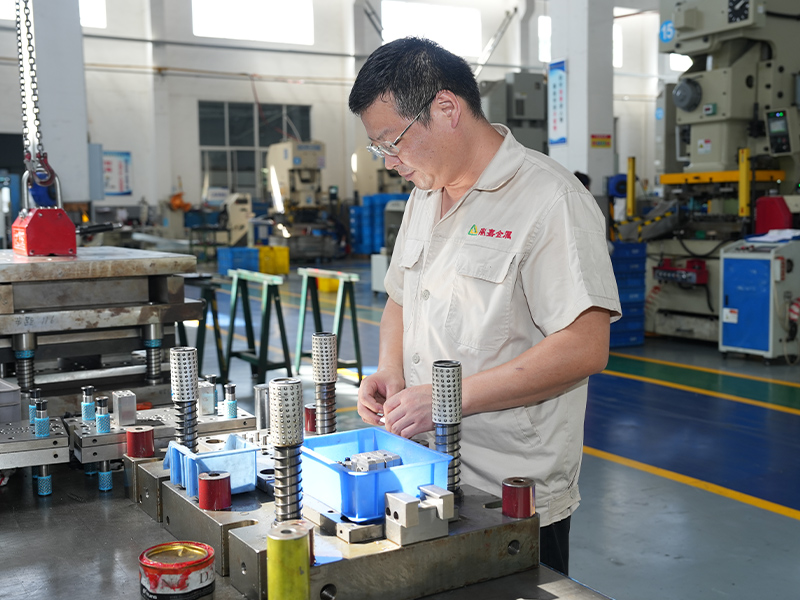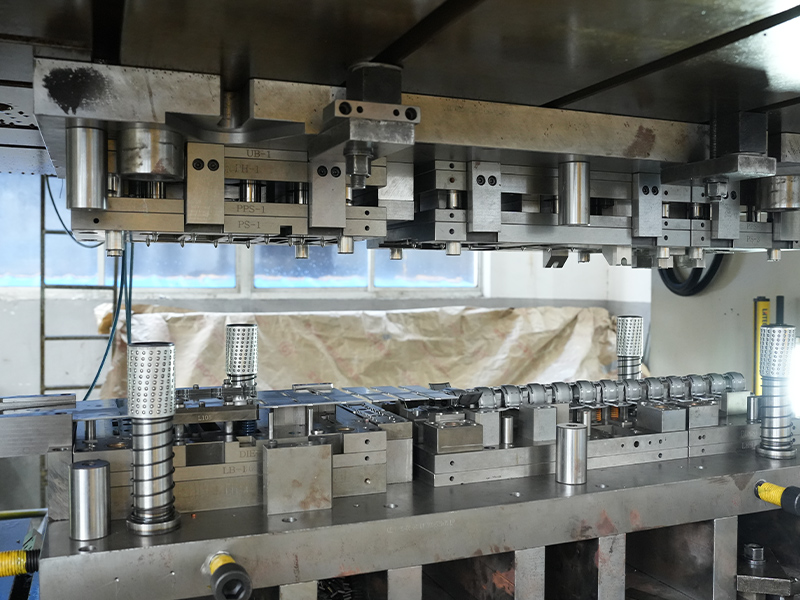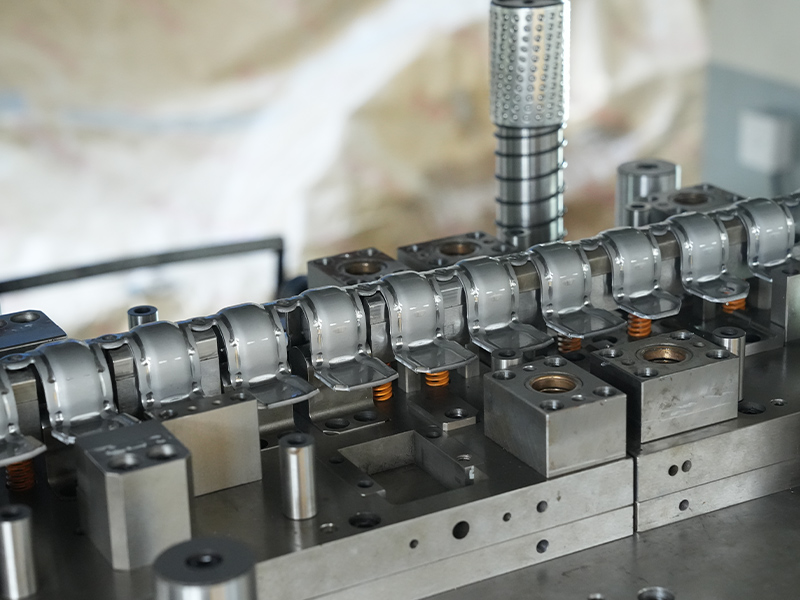Stainless steel stamping parts are essential components in many industries, including automotive, electronics, medical devices, construction, and household appliances. They offer durability, corrosion resistance, and precise dimensions. However, selecting the right stainless steel stamping parts can be challenging, especially given the variety of materials, processes, and applications available. Choosing incorrectly can lead to increased costs, part failure, or poor performance. This article provides a practical guide on how to make the right choice.
1. Understand the Application
Before selecting any stainless steel stamping part, you must clearly define its intended application. Key considerations include:
- Load and stress requirements: Will the part carry heavy loads, endure repeated motion, or function under high stress? Parts subject to stress require tougher materials and stricter quality control.
- Environmental conditions: Will the part be exposed to moisture, chemicals, extreme temperatures, or outdoor conditions? Stainless steel grades vary in corrosion resistance and heat tolerance.
- Functionality: Consider whether the part is structural, decorative, or functional. Decorative parts may prioritize surface finish, while functional parts need strength and precision.
Understanding the application ensures that your choice of material and process aligns with the part’s performance requirements.
2. Choose the Right Stainless Steel Grade
Stainless steel comes in multiple grades, each with unique properties. The three most common types used in stamping are austenitic, ferritic, and martensitic stainless steel.
a. Austenitic Stainless Steel (300 Series)
- Characteristics: Excellent corrosion resistance, good formability, non-magnetic.
- Advantages: Ideal for complex stamping parts and food-grade or medical applications.
- Limitations: Lower strength compared to martensitic grades; may require thicker sheets for structural applications.
b. Ferritic Stainless Steel (400 Series)
- Characteristics: Magnetic, moderate corrosion resistance, good strength.
- Advantages: Suitable for automotive and industrial applications where high corrosion resistance is not critical.
- Limitations: Less ductile, may crack during deep drawing.
c. Martensitic Stainless Steel
- Characteristics: High strength, moderate corrosion resistance, can be heat treated.
- Advantages: Best for applications requiring durability and wear resistance, such as cutting tools or fasteners.
- Limitations: Poor formability, more difficult to stamp complex shapes.
Choosing the appropriate grade ensures your stamped parts meet both performance and longevity expectations.
3. Consider Thickness and Size
The thickness of the stainless steel sheet significantly affects the stamping process. Thin sheets are easier to stamp into complex shapes but may lack structural strength. Thick sheets offer durability but may be harder to form and more prone to tool wear.
- Thin sheets (0.2–1 mm): Suitable for decorative components or lightweight enclosures.
- Medium sheets (1–3 mm): Balance between formability and strength. Common in automotive panels and brackets.
- Thick sheets (3 mm and above): Ideal for heavy-duty structural parts, though stamping may require specialized equipment.
Additionally, the overall size of the part matters. Larger stamped parts may require higher precision tooling and press capacity, while small intricate parts need attention to tolerances and detail.
4. Understand Stamping Processes
Stainless steel stamping is a versatile process that includes blanking, punching, bending, embossing, and deep drawing. Each process has implications for material selection and design.
- Blanking: Cutting parts from a sheet. Minimal stress; suitable for flat or simple shapes.
- Punching: Creating holes or cutouts; consider material thickness and hardness to avoid burrs.
- Bending: Requires understanding minimum bend radius to prevent cracking.
- Embossing: Adding patterns; requires uniform thickness and a grade that resists deformation.
- Deep Drawing: Forms complex 3D shapes; needs high ductility and low springback for accuracy.
Selecting the right process depends on the part’s complexity, material properties, and final application.
5. Evaluate Tolerances and Precision Requirements
Stainless steel stamping can achieve high precision, but tolerances vary depending on the process, tooling, and material grade. Consider the following:
- Critical dimensions: Identify areas where exact dimensions are essential for assembly or functionality.
- Springback: Stainless steel tends to “spring back” after bending, slightly altering dimensions. Some grades, like austenitic types, have higher springback.
- Consistency: For mass production, ensure your supplier can maintain tight tolerances across batches.
A clear understanding of tolerance requirements will guide material selection, tooling design, and quality control methods.
6. Surface Finish Considerations
The surface finish of stainless steel stamping parts affects both aesthetics and functionality. Common finishes include:
- Polished: Smooth, shiny, often used for decorative or visible components.
- Brushed: Offers a matte finish; hides fingerprints and minor scratches.
- Matte or bead-blasted: Reduces reflectivity and improves corrosion resistance in certain applications.
- Coated or plated: Provides additional protection or aesthetics; consider whether coatings affect stamping.
Matching the finish to the application ensures longevity and reduces the risk of corrosion or wear.

7. Assess Corrosion Resistance
Even stainless steel is not immune to corrosion. Selecting a grade that meets environmental conditions is critical:
- Austenitic 304: Excellent for indoor or mildly corrosive environments.
- Austenitic 316: Better for marine or highly corrosive applications due to molybdenum content.
- Ferritic 430: Adequate for dry, indoor conditions but not suitable for wet environments.
Corrosion resistance also depends on post-stamping finishing and whether edges, corners, or burrs are properly treated.
8. Check Compatibility With Other Processes
Sometimes stamped stainless steel parts undergo secondary processes, including:
- Welding: Some grades, like 304, weld easily; martensitic grades require special handling.
- Heat treatment: Martensitic and certain ferritic grades can be hardened for durability.
- Coating or painting: Surface preparation is crucial to ensure adhesion and prevent corrosion.
Understanding how the stamping part interacts with other processes prevents compatibility issues later.
9. Consider Cost and Availability
While material performance is essential, cost and supply availability are also practical concerns:
- Grade costs: High-performance grades like 316 are more expensive than 304 or 430.
- Sheet thickness: Thicker sheets increase material cost and stamping difficulty.
- Tooling requirements: Complex designs may need specialized dies, which increases upfront costs.
Balancing cost with performance ensures you get the best value without compromising safety or functionality.
10. Work With Reliable Suppliers
Finally, choosing the right stainless steel stamping part often comes down to supplier quality. Look for suppliers who offer:
- Experience: Years in stainless steel stamping with proven expertise.
- Quality assurance: ISO or other certification standards and inspection reports.
- Technical support: Assistance with material selection, design optimization, and process recommendations.
- Capacity: Ability to handle your order volume and maintain consistency.
A reliable supplier helps avoid common problems such as poor tolerances, inconsistent finishes, or material defects.
11. Practical Tips for Selection
- Request samples before full-scale production.
- Verify material certificates to confirm the grade and mechanical properties.
- Discuss design challenges with your supplier early to prevent stamping issues.
- Consider lifecycle costs: maintenance, corrosion protection, and replacement frequency.
- Plan for future scalability if production volume increases.
Conclusion
Selecting the right stainless steel stamping parts requires a careful balance of material properties, design requirements, manufacturing processes, environmental conditions, and cost considerations. By understanding the application, choosing the appropriate stainless steel grade, considering thickness and size, evaluating stamping processes and tolerances, and working with a trusted supplier, you can ensure high-quality, durable, and efficient parts for any application.
Making informed decisions at the selection stage reduces production problems, enhances part longevity, and delivers optimal performance in the end-use environment.













